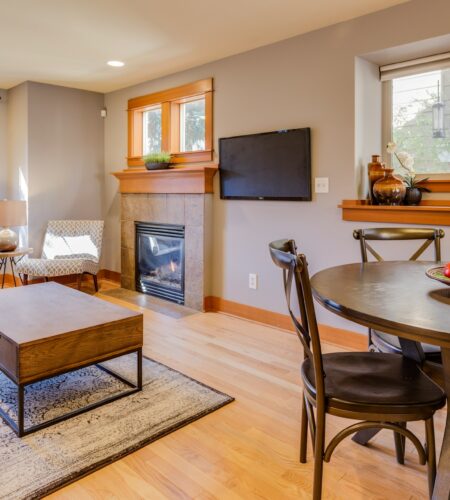Moving to a new country brings countless adventures, but it also means leaving behind the familiar comfort of home.
The scent of your grandmother’s kitchen, the way afternoon light filtered through your bedroom window, or simply knowing exactly where everything belonged—these small details create the feeling we call “home.”
After living in four different countries over the past decade, I’ve learned that recreating that sense of belonging doesn’t happen overnight. It requires intention, creativity, and sometimes a willingness to blend the old with the new in unexpected ways.
The good news? You don’t need a massive budget or perfect language skills to turn your temporary living space into a true sanctuary. Whether you’re settling into a tiny studio apartment in Tokyo or a shared flat in Berlin, the principles remain the same.
Creating an expat home that feels genuinely yours is about more than just unpacking boxes—it’s about crafting a space that reflects who you are while embracing where you’ve landed.
Start With What Speaks to Your Heart
Prioritize Comfort Over Perfection
Your first instinct might be to rush out and buy everything at once, but resist this urge. Instead, focus on one room where you spend the most time. For many of us, that’s the bedroom or living area.
Invest in quality basics that make an immediate difference to your daily life: comfortable bedding, proper lighting, and seating that supports your back. I learned this lesson the hard way during my first month in Prague.
I spent weeks sleeping on an uncomfortable mattress because I thought I should furnish the entire apartment before addressing basic comfort. Once I finally invested in decent bedding and a few soft pillows, everything else fell into place more naturally.
Bring Pieces of Your Story
Every meaningful space tells a story, and your expat home should tell yours. This doesn’t mean shipping entire rooms across continents, but rather selecting a few meaningful items that anchor you to your personal history.
A favorite coffee mug, photographs from home, or that book you’ve read a dozen times—these small touches create immediate familiarity in unfamiliar surroundings.
Consider creating a dedicated space for these personal treasures. A small shelf, a corner of your desk, or even a section of your nightstand can serve as your personal museum, reminding you of your journey and the people who matter most.
Master the Art of Local Integration
Shop Like a Local Detective
One of my favorite decorating tips involves becoming a neighborhood explorer. Skip the obvious furniture chains and instead discover where locals shop.
Flea markets, estate sales, and second-hand stores often yield unique pieces that you’ll never find in generic retail outlets. Plus, these adventures help you practice the local language and understand cultural preferences.
In Barcelona, I found my favorite reading chair at a small vintage shop tucked behind the main tourist area. The owner spent thirty minutes telling me its history, and now every time I sit in it, I remember that conversation and feel more connected to the city.
Embrace Local Aesthetics
Rather than trying to recreate your home country’s style exactly, allow your new environment to influence your choices. This doesn’t mean abandoning your personal taste, but rather creating a dialogue between your preferences and local design traditions.
If you’re living in Scandinavia, explore how minimalism and natural materials might enhance your space.
In Mexico, consider how vibrant colors and handcrafted textiles could add warmth. This approach creates cozy living spaces that feel both personal and place-appropriate.
Create Rituals That Make Space Sacred
Establish Daily Anchoring Moments
The most beautiful room means nothing if it doesn’t support your daily rhythms. Think about the small rituals that made your previous home feel special, then adapt them to your new space.
Maybe it’s brewing morning coffee in a specific corner, reading before bed in a designated chair, or playing music while cooking dinner.
These consistent behaviors transform generic spaces into personal sanctuaries. Your brain begins to associate these areas with comfort and routine, creating psychological anchors in your physical environment.
Design for Multiple Moods
Living abroad often means dealing with homesickness, culture shock, and the emotional roller coaster of constant adaptation. Your living space should support you through all of these experiences.
Create different zones for different needs: an energizing area for productive work, a calm corner for reflection, and a social space for connecting with new friends.
This might mean simply rearranging furniture to create distinct areas, or using lighting and textiles to transform the same space for different purposes throughout the day.
Budget-Friendly Solutions That Pack a Punch
Transform with Textiles
If you’re working with rental restrictions or a tight budget, textiles become your best friend.
Throw pillows, blankets, curtains, and rugs can completely change a room’s personality without permanent modifications. These items are also relatively easy to pack when you eventually move again.
Layer different textures and patterns to create visual interest. A soft throw over a basic sofa, colorful pillows on a plain bed, or a beautiful rug over standard flooring can make rental furniture feel like deliberate design choices.
Maximize Natural Light and Greenery
Nothing transforms a space faster than proper lighting and living plants. Remove heavy curtains that block natural light, position mirrors to reflect brightness throughout the room, and add plants that thrive in your local climate.
Plants serve double duty in expat homes—they improve air quality and provide a living element that grows and changes, making your space feel dynamic rather than static.
Visit local nurseries to discover plants you’ve never seen before, creating another connection to your new environment.
Navigate the Practical Challenges
Work Within Rental Limitations
Most expat housing comes with restrictions on modifications, but creativity can overcome most obstacles.
Removable wallpaper, command strips for hanging art, and furniture that doesn’t require permanent installation allow you to personalize without risking your security deposit.
Focus on additions rather than changes. Instead of painting walls, hang beautiful fabric or create a gallery wall with removable hanging systems. Rather than installing new fixtures, use table lamps and floor lamps to improve lighting.
Plan for Future Transitions
Accept that your expat home might be temporary, and design accordingly. Choose items that can easily move with you, either to another local apartment or back to your home country.
This mindset liberates you to be more experimental—that bold wall hanging might not work in your forever home, but it could be perfect for your current adventure.
Keep a small storage solution for items that don’t work in your current space but might be perfect for your next one. This allows you to collect meaningful pieces over time without forcing everything to work immediately.
Embrace the Journey of Belonging
Creating a true expat home isn’t about achieving magazine-perfect results. It’s about building a space that supports your daily life, reflects your personality, and helps you feel grounded during a period of constant change.
Some days your home will feel perfect, and others it might feel like a work in progress—both experiences are completely normal.
The most important decorating tip I can offer is to be patient with yourself and the process. Every expat experiences moments of homesickness and displacement, regardless of how beautifully their apartment is decorated.
Your home is just one tool in building a fulfilling life abroad, but it’s a powerful one when approached with intention and creativity. Remember that the goal isn’t to forget where you came from or to completely assimilate into your new culture.
The best expat homes celebrate this unique in-between space, creating sanctuaries that honor your journey while embracing your current adventure. Your space should tell the story of who you’re becoming, not just who you’ve always been.
Start small, be patient, and trust that each thoughtful choice brings you closer to creating a space that truly feels like home—no matter how far you are from where you started.
Subscribe to our email newsletter to get the latest posts delivered right to your email.

